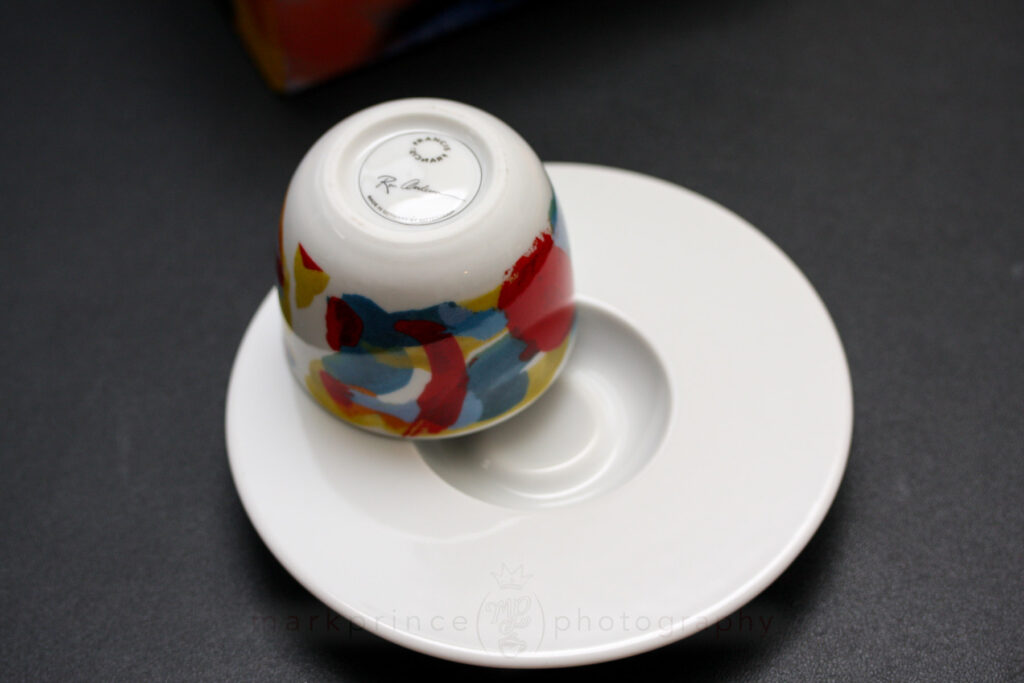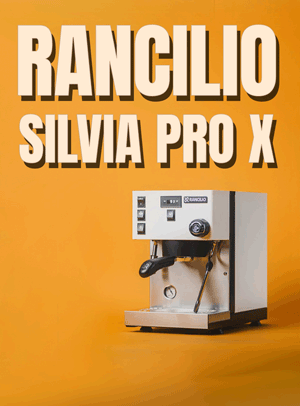Originally this article was called October Coffee Discoverings. Yes, I know discoverings is not a proper word, but it is what it is. So hello again for another Coffee at the Moment article, this time covering some interesting coffees, events, products and musings that happened in October.
Trade Shows and CoffeeGeek
We recently ran a short review from Liz Clayton about the Toronto Coffee and Tea Expo that is probably the least read article this year so far on CoffeeGeek. And it’s no knock against Liz – she’s a good writer. And last month, I posed the question – should CoffeeGeek be covering trade shows as much as we used to – and even though I repeated the question in the forum thread associated with that article, no one responded one way or the other.
I did get a couple of emails on the subject however. The typical theme in those emails were “I don’t want to ruffle feathers publicly, but…” and it went on to say that in general, the show reports were pretty boring for most consumers, or that the stuff we cover is boring, or a combination of the both. Basically it seems like there’s very little desire amongst the bulk of our readership to read these kinds of things.
Considering what it cost in 2006 (and 2005) to cover these things, including barista competitions, I’m going to guess the public has spoken – except for the SCAA show, which is kind of de riguer, coverage of trade shows will be of less importance on this website for the time being. Or at least coverage that costs a lot of dough. We will have some additional coverage from the Toronto show (the social events), from Milan (two guest authors on scene for that one), and possibly from the CoffeeFest show in a week’s time, but I’m not attending them.
But I’ll throw the question out there once more, quite plainly – do you want CoffeeGeek to continue to cover trade shows, barista competitions and barista jams like we did in the past? A visit to the Show Reports page details our history of covering these events, including years past when we had four, five or more reporters crawling the scene. Please make your opinion known.
Francis Francis Espresso Cups, Radically Improved!

A very welcome package arrived from long time site supporter 1st in Coffee, containing not one, not two, not even three, but four cups brand new out from Francis! Francis! called mou.
These cups are a radical departure from the “let’s pretend this is tea” cups that Francis! Francis! commissioned in the past. Those cups, which are visually quite striking and beautiful, are unfortunately not very suitable for espresso and its demands that 30 mls (1oz) of hot liquid require to, well, stay hot for even a minute or two.
I’m a total nut job when it comes to espresso cups. I have easily over 750 individual cups – probably more than 1,000, and I’m slowly documenting them on flickr. (I was actually also counting cups mentioned right up to this one, getting up to 77 on the thirteenth photo, but that kind of defeated the purpose of actually photographing a cup a day, so I stopped the “description count” after that one).
I say this because, being the espresso cup collector I am, these are some of the most unique, yet still most usable cups I’ve ever come across. Here’s some great things about these cups – some obvious, some not so obvious.
Thickness Super, duper thick. some of the thickest espresso cups I own in fact. The porcelain thickness is on par with the thickest-walled ACF cups that are preferred by many espresso aficionados.
Artwork. Espresso’s a beautiful work of art when it is done right. You wouldn’t put a Degas in an Ikea frame – I’m a firm believer that a great espresso cup just enhances and completes the overall sensory experience that is a great espresso. The artwork here is by Ron Anderson, and in some ways, reminds me of another set of cups I believe he’s done for Francis! Francis! (Zig Zag), and also along the same lines of abstract, colourful and visual art that Peter Roesch used in his Illy Schwung cups in 1999.
Inner bowl. One of those subtle things. Outside, the porcelain features fairly straight walls. Inside, the porcelain is a proper “bowl” shape preferred by many for great espresso.

The saucers tack nicely – you can see the thickness, and bowl design here as well.
Weight. Along with thickness, these are some of the heaviest espresso cups I’ve ever owned or used as well – especially considering there’s no handle. Mitterteich , the German porcelain maker, is responsible for these cups, and I’m quite surprised that Francis! was able to convince them to go so thick. German porcelain makers pride themselves on the normal “holy grail” for porcelain – as strong as possible, but as thin as possible too. Italian porcelain makers don’t have a problem going ‘thick’ and heavy, but that hasn’t always been the case for German makers. We see this in Illy cups all the time – the consistently heavy ones are made by IPA in Italy; the Rosenthal variants are usually 20%, 30% lighter, and thinner porcelain. But much better finish than IPA’s cups. These Mitterteich cups for the mou set are both thick and finished nicely, even in the cup’s “shoe” or base, where it makes contact with the table.
The Saucer. Also extremely thick and well finished, and entirely unique. The cups actually sit in a recessed “bay” in the saucer that otherwise is very flat on top. The bottom has its own details (ribs, angles, etc) and is also signed by the artist. These are probably the most unique saucers I’ve ever seen, easily trumping Illy’s “floating cloud” saucer design. There’s only one drawback. Because the top of the saucer is flat (except for the cup “bay” area), it makes keeping a spoon in place, esp. if you’re hand-serving the saucer and espresso, difficult – the spoon will slide off the saucer easily. Well, if you use a Thomas Vario flat espresso spoon (or the much less expensive Bodum Barcelona Spoons) it will work out fine.
Stacking. The saucers and cups stack very well – the saucers especially. It’s little things like this that impress me about industrial design.

Very heavy cup for sure – 160g, and no handle

And that’s with a handle.

Rosenthal’s lighter, thinner porcelain is still great for espresso.

Nice, substantial weight. About 3/4 a lb!

These IPA saucers are pretty thick on their own.

Rosenthal’s cup and saucer package is 90g lighter than the mou cups.
These cups are actually quite reasonably priced, at least as far as “collector espresso cups” are concerned – $60 for a set of four ($15 each is the breakdown) which is substantially less than the $100-$140 that current-day Illy sets cost (Illy’s no longer including the coffee with some new sets).




Coffee Bag Reading

I love this kind of consumer education and information that’s showing up on more and more coffee bags.
I don’t know about you, but I like reading coffee bags. And trends that seemed few and far between a few years back are becoming more common today – telling the story of direct relationships on the bag, explaining brewing methods, or just having some interesting slogans and looks.
As an instance, I really like PT’s Coffee bags – they have some really interesting stuff on them. Brewing Basics on one side, a bit about PT’s on the other side, and intro text about relationship coffees on the back. The brewing basics are pretty good info too, stating:
“Start with fresh, pure cold water, heated to just below a boil. Grind your coffee just prior to brewing and select the correct grind for your brewer. The faster the brew, the finer the grind. Avoid freezing or refrigerating coffee. Instead, buy just enough coffee for a one week period of time. Freshness is the first step to a great cup!”
There’s a bit more, but this is all great info for consumers to start on the road to having an awesome cup of coffee.
Other companies are doing similar things. Intelligentsia has their “Fresh Brewed Intelligence” on the side of every bag, and some verbage about their direct relationships on the bag of every bag. Batdorf and Bronson’s bags are less wordy, but highlight the company’s focus on sustainability and ecological concerns, with phrases like “Encouraging healthy ecological systems with a commitment to sustainable and bird-friendly coffees” and “produced with 100% certified renewable energy” on the bag (though I’d like a bit more explanation about the second quote!)
All of these coffees have detailed cupping notes on the front. A recent bag of Yemen Mocha from Batdorf that I tried said “from the Arabian Peninsular comes this complex and intriguing coffee. Our Yemen features spicy flavors of smoky scotch and hints of dry fruit, resulting from their national dry-processing method. At its best, this coffee also unveils elusive notes of cocoa and caramel.”
There’s a lot to be read in that cupping report. Anyone who really knows Yemen Mocha knows it’s a bit of a crapshoot – every cup can taste different, because its one of the most poorly sorted and graded coffees in the world. But that’s also part of Yemen Mocha’s mystique and intrigue, and one of the reasons why I like it so much. But I digress a bit…
Not every roaster does this kind of detailed education on their bags yet, including a few very famous US-based roasters, but I see the trend growing and growing – and it’s all good for the industry and consumers. Getting consumers to understand some basics – the importance of the grind; the importance of good water; the importance of freshness; the importance of grinding just before brewing; etc etc – is something that’s happening more and more with a lot of quality coffee roasters.
Wrap up
That’s it for this article. Content may be a bit few and far between for the next few months (though we’re going to try our best!) because of something I’ll write more in the next edition of Coffee at the Moment – we’re taking on the six month project of completely rebuilding CoffeeGeek.com from the ground up. There’s so many new features, community aspects, social networking, forums enhancements, new content areas and stuff that it’d take me five articles to cover it all! But next issue, I’ll talk up some new changes we have planned for the opinion articles section. Till then, drink good coffee, and spread the word!
























